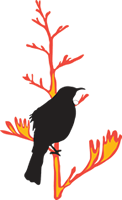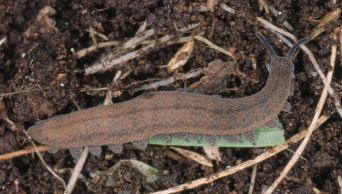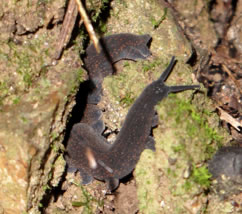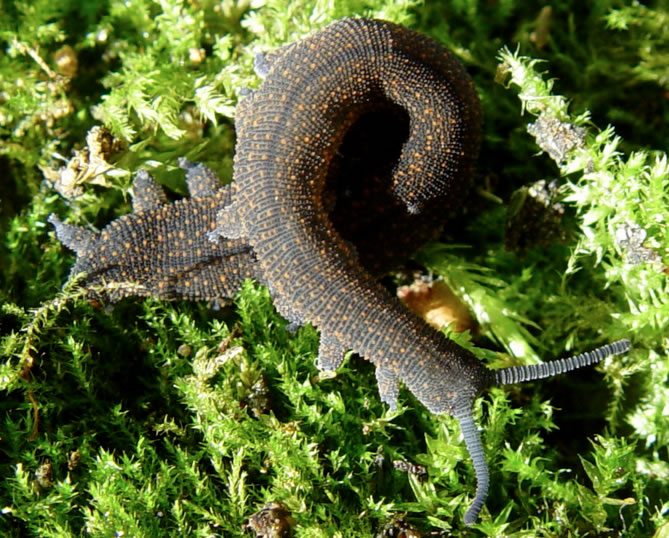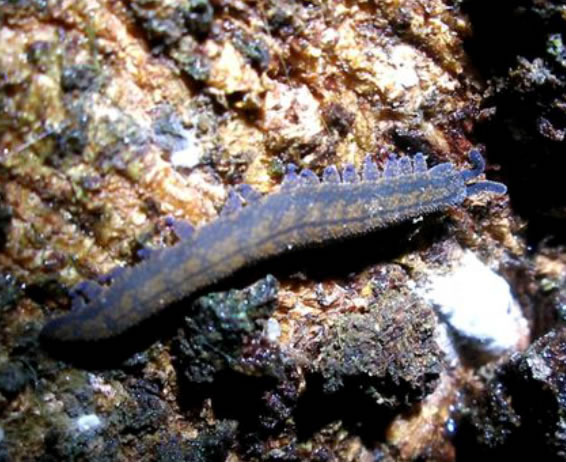Onychophora, "peripatus", velvet worms.
Velvet worms as they are commonly known, are members of the Phylum Onychophora. Globally, 140 species are recognised. There are two living families of these soft bodied animals; the Peripatidae have an equatorial distribution and Peripatopsidae live in southern hemisphere lands, and is this family that is found in New Zealand. There are currently nine named species of Peripatus in New Zealand in two genera. The systematics of these animals has been problematic becuase of their conserved morphology, but molecular data are helping reveal more diversity. In New Zealand, seven species are currently assigned to the genus Peripatoides: P. novaezealandiae, P. suteri and P. indigo, P. aurorbis, P. sympatrica, P. kawekaensis and P. morgani. These are ovoviviparous, giving birth to live young that have developed within their eggs in the mothers twin oviducts. Two other recognised species are in the genus Ooperipatellus: O. viridimaculatus and O. nanus and are oviparous, laying eggs. Among the five live bearing North Island species, the distribution of P. sympatrica overlaps with each of the others. In many cases two species have been found in the same rotting log, but genetic data have shown that there is no interbreeding (Trewick 1998, Trewick et al. 2000). The range of the North Island species group extends across Cook Strait to the top of South Island; a pattern that probably developed during last glacial cycle (~20,000 years ago) when the two main islands were connected due to low sea level. In southern South Island, Ooperipatellas occur mostly west of the the main divide (Southern Alps), but there are Peripatoides in the east with at least two undescribed species near Dunedin (Trewick 1999).
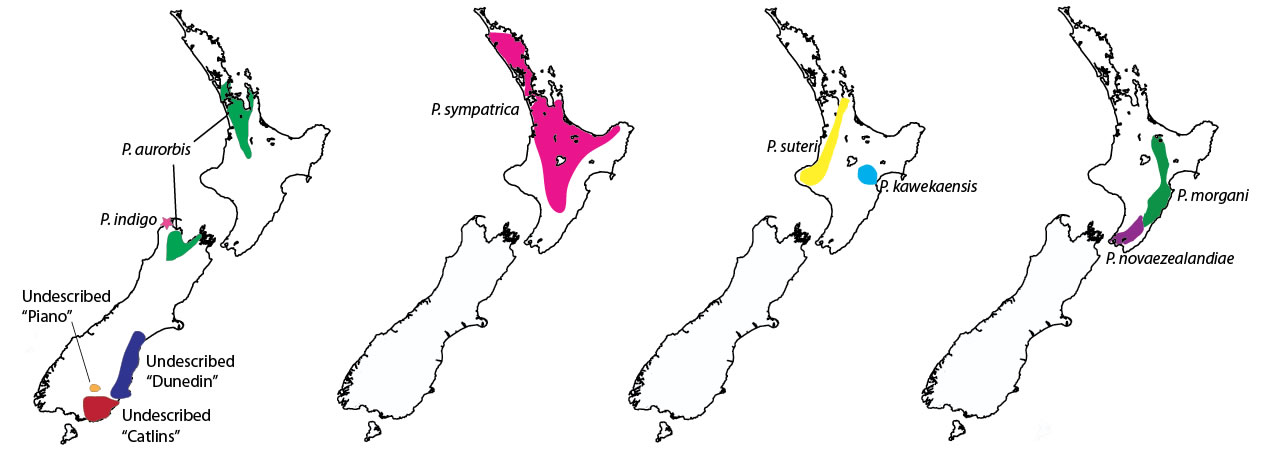 |
The name Onychophora means ‘claw-bearers’, referring to the claws found at the end of each of their legs. The name peripatus means ‘to walk or wonder about’ but is problematic as a common name becuase it is also a genus name (Peripatus species occur in the New World tropics, not in Australasia). The Maori name, ngaokeoke, also means to crawl. Velvet worms (so called becuase of the soft velvet like cuticle) have no body segments, however their head has three parts, the first contains their two highly sensitive antennae, the second their jaw and mouthparts, and the third the first pair of parapodia-like legs. New Zealand species have either 13, 14, (Ooperipatellus) 15 or 16 (Peripatoides) pairs of legs, and the number of pairs can be used to distinguish between some species. They tend to appear dark blue-grey in colour, but many have orange spots too, and all have a velvety appearance. Peripatoides colour and pattern appears to vary alot, but Ooperipatellus tend to have more regular markings (right hand picture below).
Onychophorans are often described as the missing link between annelids and arthropods, as, like annelids they have a fluid filled body surrounded by muscle and lack an exoskeleton, but, like arthropods they have chitin and a tracheal system. They have since been more closely linked to arthropods. Onychophora in the fossil record date back as 520 million years ago, in the Cambrian Burgess Shales, as shallow marine invertebrates. More recent fossils of around 40 mya, show that land Onychophora formerly existed in the northern hemisphere.
Habitat:
velvet worms are unable to close the spiracles into their body cavities and so dry out easily. For this reason they are limited to damp habitats such as leaf litter, rotting logs and screes in forests throughout New Zealand. They are nocturnal, avoiding day time predators and desiccation. At night, peripatus are very mobile and move around forest and other damp habitats such as caves hunting for food. A number of species in New Zealand are found to overlap, with little morphological differences between species; behaviour and niche separation is likely to aid in this overlap.
Hunting and Feeding:
They may look sweet and innocent, but velvet worms are stealthy predators. They locate their prey by quietly moving along the forest floor, and feeling for any movement with their sensitive antennae. Once prey of a suitable size is located, they squirt a sticky liquid from glands by their jaw, subduing the prey (small beetle, spider, cockroach or maybe a cricket or weta.) The velvet worm then bites into the side of the prey and injects digestive fluids which break down the prey’s tissue and can then be sucked out by the velvet worm. What remains is usually just the hard chitinous exoskeleton and the gut of their prey.
Reproduction:
New Zealand onychophora reproduce sexually, so there are male and female individuals. In Peripatoides, adult females can be twice the length of males. Females have two uteri in which embryos develop, and these are born as miniture white peripatus. Little is know about how New Zealand peripatus mate, but there is some evidence that, like some Australian species, males deposit a package of sperm (spermatophore) onto the female’s body. This is then absorbed through the body so that spermatozoa swim through the body fluid to the spermatophore to be stored and used for fertilisation of eggs by the female when needed. Peripatoides are sometimes found with a group of very small young that have developed their adult colour, suggesting some level of parental care or at least communal aggregation.
